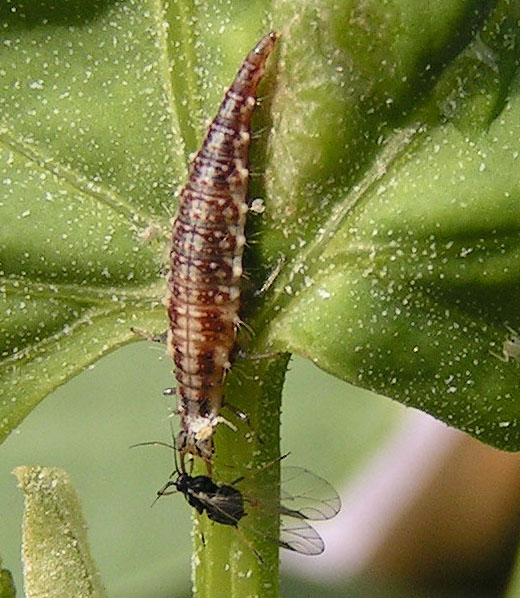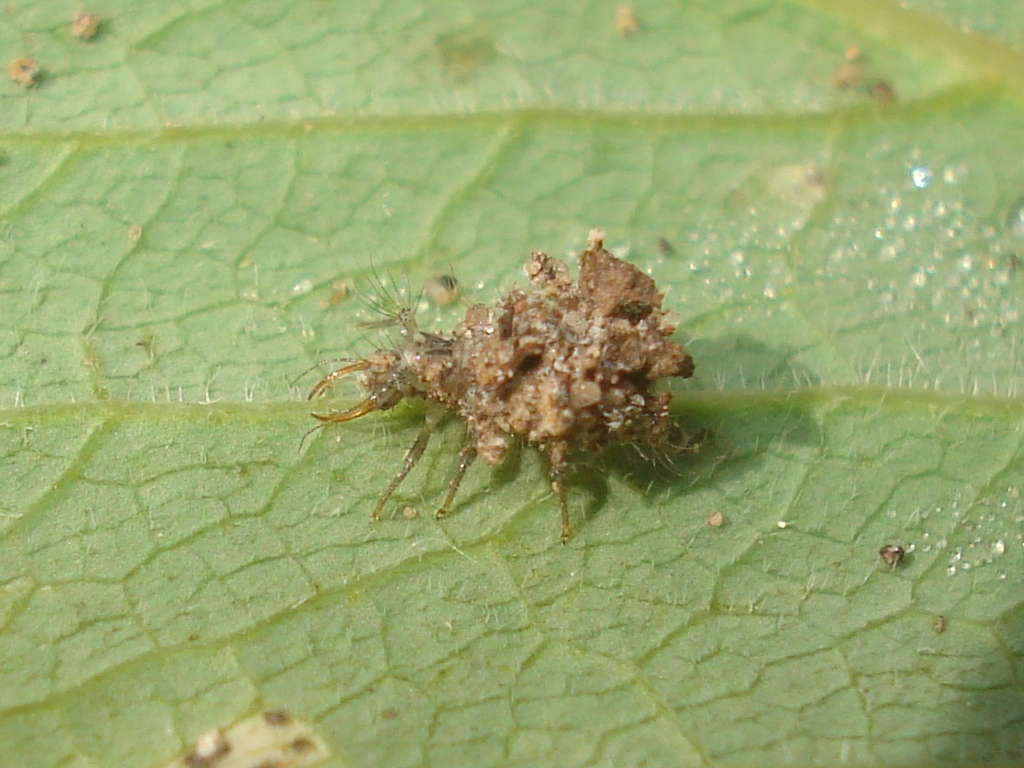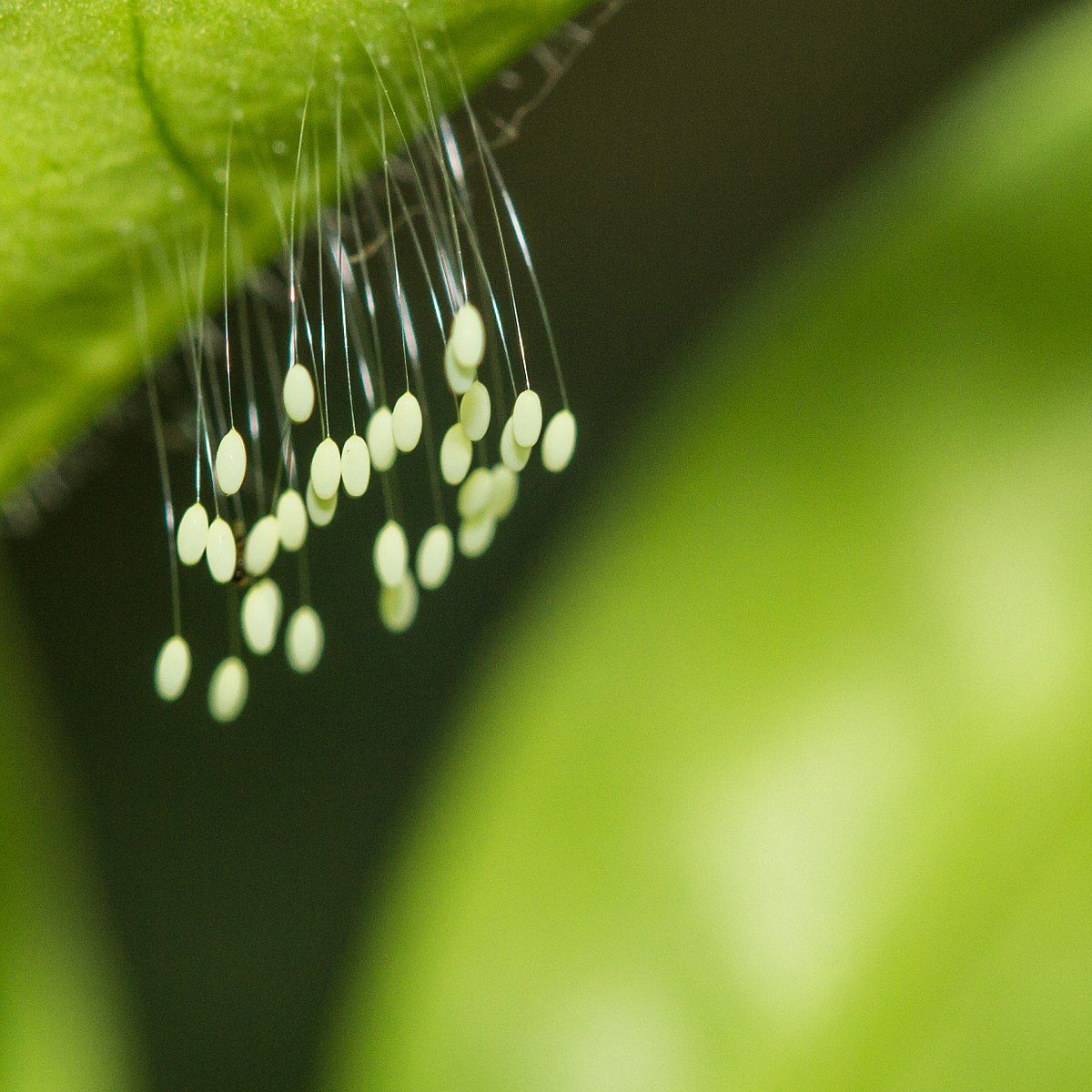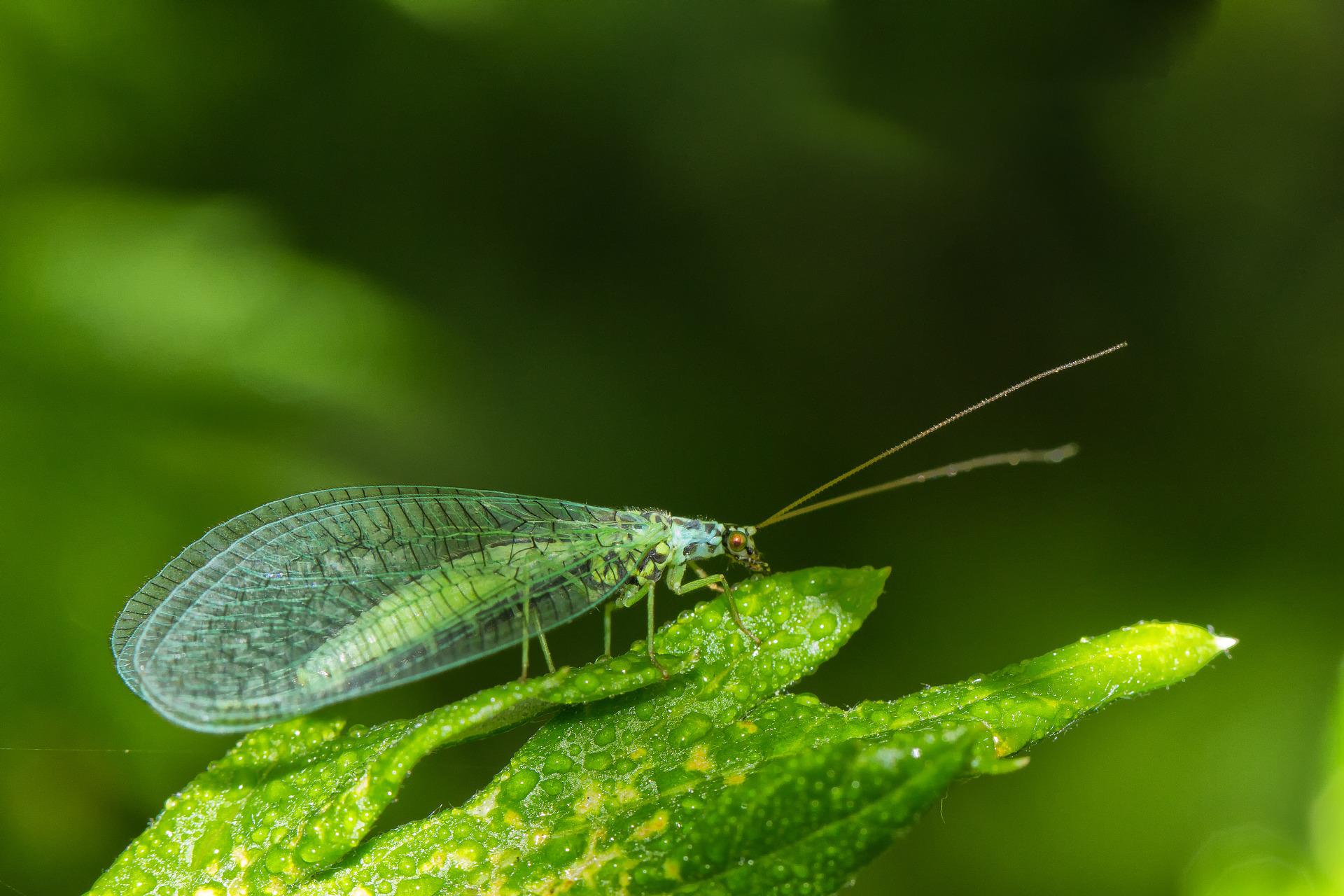Agriculture and Natural Resources Blog
Contact
Jon Zawislak
Assistant Professor, Apiculture and Urban Entomology
Phone: 501-671-2222
Fax: 501-671-2252
Email: jzawislak@uada.edu
Office:
University of Arkansas
Division of Agriculture
Cooperative Extension Service
2301 S. University Avenue
Little Rock, AR 72204
Austin Jones
Instructor and Director of Undergraduate Education,
Entomology and Plant Pathology
Phone: 479-575-2445
Email: akj003@uark.edu
Office:
University of Arkansas
Dale Bumpers College of
Agricultural, Food, and Life Sciences
Entomology and Plant Pathology
PTSC 217
University of Arkansas
Fayetteville, AR 72701

Blog Series: What's that bug?
Green Lacewing larvae
By Jon Zawislak, Assistant Professor – Apiculture and Urban Entomology, Austin Jones, Instructor and Director of Undergraduate Education – Entomology and Plant Pathology, and Whitney Haigwood, Technical and Social Media Writer – Agriculture and Natural Resources
Do you know why these insects are referred to as "trash bugs?" While the name may not be delightful, their predatory skills are certainly beneficial!

FEEDING – Green lacewing larvae feeding on an aphid.
(Image Source: Wikipedia)
Green lacewings are a group of about 2,000 species in the insect family Chrysopidae. They form part of the order Neuroptera, from the descriptive Greek words for their large net-like wings. This insect order is considered highly beneficial to gardeners and farmers because most have a seemingly insatiable appetite for small soft-bodied plant pests.
The larvae of lacewings are covered with spikey hairs and sport a large pair of pincer-like mandibles. They are voracious predators of aphids, small caterpillars and other insect larvae, insect eggs and some mites. At high population densities, they may even eat each other. Because of their appetite for aphids, lacewing larvae are also sometimes called aphid lions.
The specialized jaws of lacewing larvae are large and hollow. They clamp onto their prey, injecting digestive enzymes that effectively liquefy the prey’s organs. They then suck out the dissolved contents of the aphid’s body, like a thirsty child with a juice box. When finished with their meal, some lacewing larvae will adorn their bodies with the shriveled carcasses of their victims. Lacewing larvae may eventually cover their entire bodies with cast skins of aphids they find, along with the remains of past meals, other bits of plant debris and lichens, until they are completely unrecognizable. Because of their curious habit, they are sometimes also referred to as junk bugs, garbage bugs, or trash bugs. This behavior may be an attempt to disguise themselves from additional prey or to hide from potential predators.

TRASH BUG - Green lacewing larvae camouflaged in sand.
(Image Source: Wikipedia)
They may also use their camouflage to fool some species of ants, which are known to guard aphids against natural predators, in order to collect their sweet honeydew secretions for themselves. These ants actively fend off insects looking to feed on the aphids in their care and will drive away larger predators to keep their herds of aphids safe. But once fully disguised, the trash bugs use stealth to patiently approach a group of aphids right under the watchful compound eyes of the ants. When an aphid is attacked by a lacewing, it gives off an odor that alerts nearby ants. However, the trash bug remains safe under its disguise while it retreats with its meal.

EGGS – distinct eggs of lacewing larvae deposited on the underside of a leaf. These are very beneficial for gardeners and farmers to recognize.
(Image Source: Wiki Commons)
After 2-3 weeks of feeding, the lacewing larva prepares for pupation by spinning a protective cocoon. Some species may even do so under the layer of dead aphid skins, perhaps to help hide and protect it during metamorphosis. After about 10 days, an adult lacewing emerges to begin the cycle again. Adult females can live for up to 2 months, producing several hundred eggs. The eggs of green lacewings are distinct and easily recognizable, deposited at the end of thin stalks on the undersides of leaves. This is thought to help hide the eggs from predators wandering on the leaf surface. Soon after hatching, a lacewing larva begins crawling across the plant looking for its first meal. Adult lacewings are also predators, but typically don’t consume as many aphids as their larvae.
Adult lacewings are equipped with tympanal organs, which allow them to detect sound waves. These organs function similarly to the human eardrum, called a tympanum. Some species appear able to “hear” echolocation signals from bats and will close their wings in mid-flight, dropping swiftly to the ground to avoid predation. Some species seem to use vibrations to communicate with each other – especially during courtship.

ADULT – Green lacewing resting on a leaf.
(Image Source: Pixabay)
Pests usually greatly outnumber their predators (which is why they are so often considered pests). When a gardener sprays to kill aphids, they often kill the beneficial predators also, but they rarely get all the pests. When the pest populations begin to rebuild, there are often too few predators to control their numbers, and the pest problem may become worse than it was before the treatment. So when you see an insect in your garden, don’t automatically consider it a bad bug. Some of those critters are doing their best to take out as many aphids as they can.
Want to see an action video of lacewing larvae feeding on sugarcane aphids? Check out the Youtube video below for the footage with interesting fun facts included!